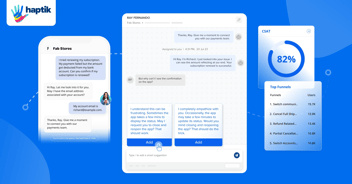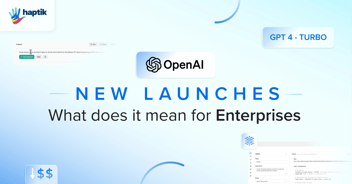Generative AI in eCommerce: 5 Ways It Boosts Operational Efficiency (and Reduces Costs)

Generative AI’s predictive capabilities, combined with its power to automate repetitive tasks and optimize processes at scale, make it an invaluable asset for eCommerce businesses. It transforms the operational ecosystem of companies through strategic automation of daily tasks and unlocks new avenues for growth. Beyond internal benefits such as efficiency gains and cost reduction, the process improvements and automation driven by Gen AI also translate to a more streamlined customer experience, fostering loyalty, retention, and higher customer lifetime value (CLV).
This is the third and final part of a series of articles discussing Gen AI in eCommerce operations, support, and marketing.
Read part one and part two if you haven’t already.
How Generative AI Streamlines eCommerce OperationsAccording to the State of Commerce report, commerce professionals estimate that the use of AI tools saves them an average of 6.4 hours per week. eCommerce processes that erstwhile required manual intervention—such as order processing and fulfillment, and inventory management and demand forecasting, among others—can now be automated using Generative AI. Thus, businesses can not only boost productivity but also drive profitability.
Let’s take the example of order fulfillment in eCommerce.
It typically involves multiple steps such as order processing, picking, packing, and shipping. Traditional methods with manual processes often lead to bottlenecks, inaccuracies, and delays, especially during periods of high demand. Such labor-intensive processes may hinder operational efficiency, reduce cost effectiveness, and cause customer dissatisfaction.
Whereas, Gen AI streamlines order fulfillment by predicting peak order times, automating picking and packing processes, and ensuring higher accuracy and throughput. Faster and error-free order fulfillment drives customer satisfaction, loyalty and fuels repeat business.
Gen AI Use Cases in eCommerce Operations
Gen AI in eCommerce operations optimizes various processes to help retailers manage costs and become agile and responsive in their day-to-day operations.
Gen AI Catalog Enhancement for Improving Quality of Retail Catalog

Retailers with merchants who typically upload 10,000+ SKUs often face challenges in maintaining retail catalogs and ensuring compliance with business and government regulations. Haptik has recently developed a cutting-edge solution to accurately categorize SKUs, generate matching product descriptions based on images, and detect compliance violations in real-time. This innovative approach has reduced catalog approval times from 2 weeks to just 2 hours, streamlining the process and enhancing overall efficiency.
Gen AI-Powered Supply Chain Management for Reduced Costs and Higher Efficiency

Generative AI enhances eCommerce supply chain operations by accurately forecasting demand, identifying potential disruptions, and optimizing logistics. By analyzing historical sales data, market trends, and transaction patterns, it predicts future product needs, ensuring optimal inventory levels and timely deliveries. Gen AI detects anomalies and fraud within the supply chain, safeguarding against potential threats. Overall, these advancements lead to cost savings for eCommerce companies, higher operational efficiency, and improved customer satisfaction.
Gen AI-Driven Fraud Detection for Increased Accuracy and Prompt Response

In contrast to traditional methods of fraud detection that rely on predefined rules and historical patterns, Gen AI’s adaptive learning capabilities and ability to analyze copious amounts of data help with proactive detection and flagging of potential fraud. By using advanced algorithms and machine learning techniques, Gen AI systems anticipate emerging fraud tactics and adapt to evolving threats. This approach not only improves the accuracy of fraud detection but also reduces the time it takes to identify and respond to suspicious activity.
AI-Powered Predictive Trend Analysis for Efficient Inventory Management

For eCommerce marketplaces, staying abreast of current trends and consumer preferences, and ensuring adequate inventory of those fast-moving products go hand in hand. Predictive trend analysis powered by AI allows businesses to anticipate consumer preferences and adjust their inventory to stock up on trending products and avoid overstocking of items. This not only optimizes storage space and reduces holding costs but also ensures popular items are always available to maximize profitability.
Gen AI Assortment Optimization for Profitable Inventory Management

Traditionally, assortment optimization in eCommerce has relied on historical sales data and competitor analysis to curate the right mix of products for sales. Gen AI injects a powerful new dimension into assortment planning by analyzing data and forecasting demand to ensure trending products or those with high demand are always in stock. Gen AI even goes a step further by recommending products to be added to the inventory that are likely to perform well, and those that can be phased out.
Final Thoughts
By automating tasks, optimizing processes, and generating valuable customer insights, generative AI empowers businesses to achieve significant efficiency gains and elevate the customer experience. It streamlines customer journeys with increased speed and accuracy in critical processes, ensuring higher satisfaction. While the initial investment in technology and data infrastructure might need to be considered, the potential return on investment (ROI) from increased sales and substantial operational cost savings is undeniable.



















